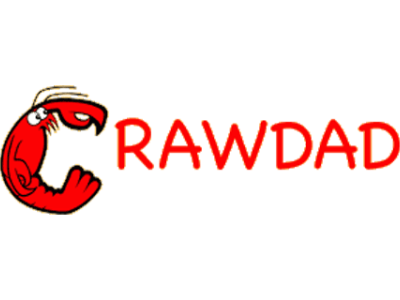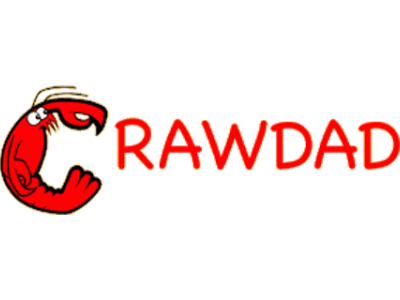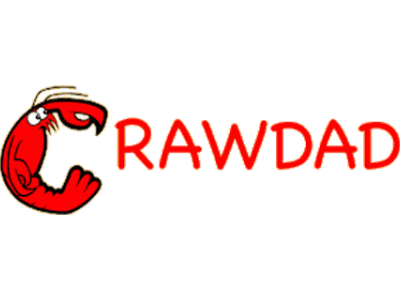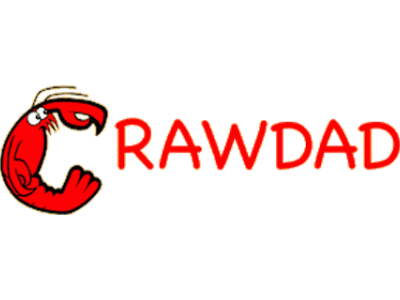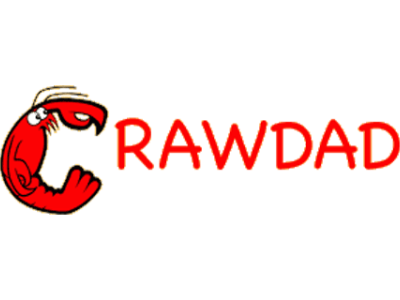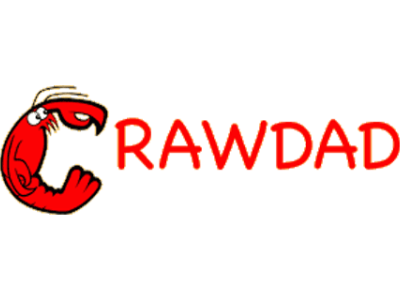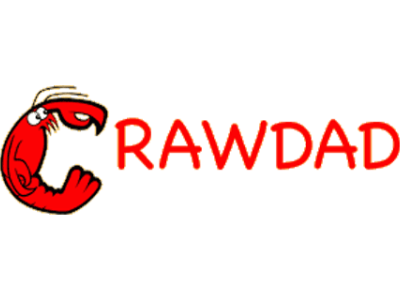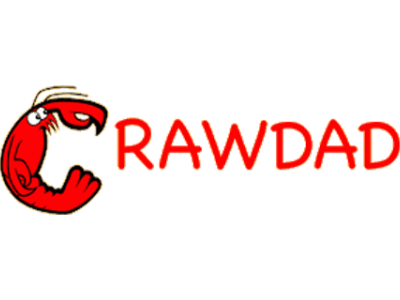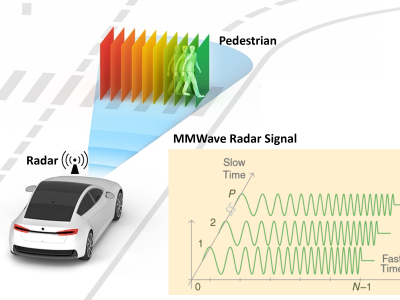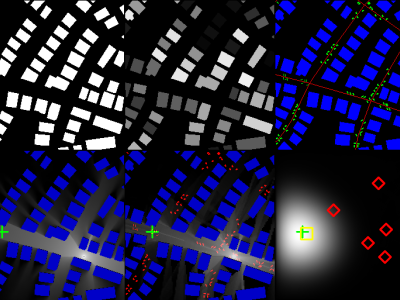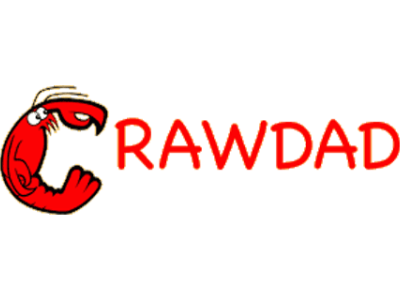CRAWDAD vanderbilt/interferometric
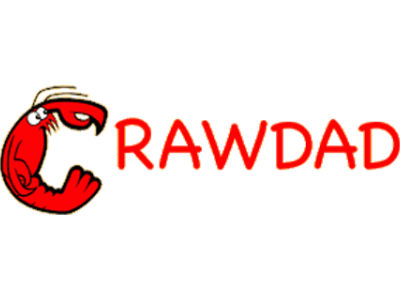
- Citation Author(s):
-
Branislav Kusy (Vanderbilt University)Janos Sallai (Vanderbilt University)
- Submitted by:
- CRAWDAD Team
- Last updated:
- DOI:
- 10.15783/C7DK54
- Data Format:
 133 views
133 views
- Categories:
Abstract
We collected localization traces from a radio interferometric tracking system, which is implemented on mote-class wireless sensor nodes.
last modified : 2007-07-18
release date : 2007-06-06
date/time of measurement start : 2006-11-29
date/time of measurement end : 2006-11-29
collection environment : Location-awareness is an important requirement for many mobile wireless applications today. When GPS is not applicable because of the required precision and/or the resource constraints on the hardware platform, radio interferometric ranging may offer an alternative. In [kusy-intereferometric], we present a technique that enables the precise tracking of multiple wireless nodes simultaneously. To evaluate the performance of the technique, we use this dataset which was collected from a prototype implementation on mote-class wireless sensor nodes.
network configuration : Our tracking system (called 'mTrack') is implemented using XSM motes from Crossbow, Inc. (a variant of the Berkeley Mica2 mote) as target and infrastructure nodes, as well as a PC laptop running the location computation and the tracking GUI. The motes are running TinyOS version 1.1.14 as the operating system. Our test environment is the empty Vanderbilt Football Stadium.
data collection methodology : Sensors record the phase and frequency of the beat signal, while the transmitter pair iterates through a series of transmit frequencies. Q-ranges are calculated for every receiver pair and then converted to t-ranges, which are input to the analytical location solver. Once positions are known, q-speeds are converted to velocity vectors. Positions and velocities are displayed on a map and optionally used to control camera pitch/pan. (Please see [kusy-interferometric] for details about q-ranges, t-ranges, and q-speed.)
Traceset
vanderbilt/interferometric/mtrack
Localization traceset collected from a radio interferometric tracking system.
- files: multipleMobile2hands.tar.gz, multipleMobile2hands.png, multipleMobile2handsa.tar.gz, 06-333-11-51-33.png, multipleMobile3.tar.gz, 06-333-11-50-16.png
- description: Localization traceset collected from a radio interferometric tracking system which is implemented on Mica2 compatible XSM motes.
- measurement purpose: Location-aware Computing, Localization
- methodology: - Implementation The radio-interferometric ranging engine is implemented as an alternate radio driver. Since both the TinyOS radio stack and the ranging engine use the same radio hardware, the former is disabled during the measurement rounds. After a measurement round is completed, the results (phase and frequency measurements for each frequency channel) are routed to the PC using the Directed Flood Routing Framework (DFRF). DFRF is configured with the gradient convergecast policy to provide a fast and reliable data collection service in a multihop network. The computation of the interferometric q-ranges, their conversion to t-ranges, as well as the location computation are implemented in Java and run on a PC. (Please see [kusy-interferometric] for details about q-ranges and t-ranges.) The computation is implemented in a dataflow like manner, which would make it possible to distribute computational blocks to different computers, or to implement them in hardware. - Time Synchronization To assure that the phase measurements are carried out at the same time on all receivers, the receivers need to be time synchronized. Instead of choosing a synchronization service that maintains a global time in the whole network (such as FTSP), we opted for a multihop extension of the Estimated Time on Arrival (ETA) approach: the transmitter node at the common focus of the hyperbolae, called the master node, generates a beacon event tagged with the start time of the next measurement round by the node's local clock. ETA will propagate this beacon message to all nodes within a few radio hops, converting the timestamp to the local time of the recipients. ETA is able to achieve much better utilization of system resources than virtual global time services, because it does not synchronize the clock skews of different nodes. However, the beacon event and the start of the measurement round need to be close in time (300 ms), to achieve high synchronization accuracy despite the drifts of the unsynchronized local clocks at different nodes. Notice, that it is imperative that multihop time synchronization be used, because the maximum interferometric range exceeds the communication range of the motes. - Experimental Environment Our experimental hardware platform is a Mica2 compatible XSM mote, programmed using the nesC programming language and the TinyOS operating system. Our test environment is the empty Vanderbilt Football Stadium. - Measurement Details The mTrack system was able to get a position fix for each of the targets in approximately 4 seconds which includes 0.5 second coordination time, 1 second ranging time, 2 seconds multihop routing time, and 0.5 second localization time. During the coordination phase, infrastructure nodes were assigned the roles of transmitters and receivers and were time synchronized with each other and with the target nodes. The nodes measured the phase and frequency of the beat signal during the ranging phase and routed the measured values to the base station during the routing phase. Finally, a PC computer calculated the target locations and velocity vectors during the localization phase. We estimated the accuracy of mTrack's localization and velocity vector estimation with respect to the ground truth. Measuring the ground truth locations of multiple moving targets accurately, both spatially and temporally, however, was a difficult problem. We simplified this problem by predefining the tracks that the targets followed during the actual experiment. Each track consisted of a series of waypoints and the targets moved between two consecutive waypoints at an approximately constant speed on a straight line. During the actual experiment, we recorded the times at which each of the targets passed each of its predefined waypoints. This allowed us to compute the actual speed of the target for each segment of its predefined track. Moreover, since we also recorded the times when the ranging measurements were taken, we could determine the segment and interpolate the ground truth location of the target on that segment for any given ranging measurement. Therefore, for any given ranging measurement, we were able to reconstruct the ground truth location of the target as well as its velocity vector. - Experiment Scenario We deployed five anchor nodes at known surveyed locations, covering an area of approximately 27.4 - 27.4 m. We placed four anchors in the corners of this square and the fifth anchor close to the center. The actual setup can be seen in [Figure: the experimental setup for multipleMobile2hands(a)] and [Figure: the experimental setup for multipleMobile3], which shows the anchor node locations (as black dots), the track that a mobile node follows, and the calculated locations and velocity vectors. This dataset contains the data from the following three experiments: 1. multipleMobile2hands Simultaneous tracking of multiple nodes: a person holds two motes in two hands, approximately 1.5 m apart and walks on the rectangular track, second person holds a single mote and walks on the triangular track. The setup is shown in [Figure: the experimental setup for multipleMobile2hands]. 2. multipleMobile2handsa Same as multipleMobile2hands, but at a different time. The setup is shown in [Figure: the experimental setup for multipleMobile2handsa]. 3. multipleMobile3 Simultaneous tracking of multiple nodes: three different nodes are moving along 3 different tracks, starting at points A,B, and C. The setup is shown in [Figure: the experimental setup for multipleMobile3].
vanderbilt/interferometric/mtrack Traces
- multipleMobile2hands: Localization trace collected from a radio interferometric tracking system for tracking three mobile nodes.
- configuration: Simultaneous tracking of multiple nodes: a person holds two motes in two hands, approximately 1.5 m apart and walks on the rectangular track, second person holds a single mote and walks on the triangular track. The setup is shown in [Figure: the experimental setup for multipleMobile2hands]. Interferometric measurement involves 3 nodes: master, assistant, and receiver. Master and assistant transmit at the same time to create the interference measurement and the receiver measures frequency and phase of this interference signal. This is repeated at multiple channels. In the paper [kusy-interferometric], we used the following 22 channels: chan-ID 1 2 3 4 5 6 7 8 9 10 11 12 13 14 15 16 17 18 19 20 21 22 chan-freq(Mhz) 401.1409755 421.1528585 441.69137 417.9930875 438.531599 458.543482 402.1942325 422.2061155 442.744627 416.9398305 437.478342 457.490225 403.2474895 423.2593725 443.797884 415.8865735 436.425085 456.436968 404.3007465 424.3126295 444.851141 414.8333165 To measure the interferometric range (q-range), we need to take calculate phase offsets of two receivers at all 22 channels.
- format:
.freq file:
each line of this file stores the frequencies measured in one interference measurement, at one receiver node.
In the experiments in the paper [kusy-interferometric], only first 22 channels were measured, the values of the other channels are marked as NaN.
parsing of each line: measurement-time seqNum masterID assistantID receiverID freq@CH1 freq@CH2 freq@CH3 ...
measurement-time is in hh:mm:ss.sss
freq@CHx means frequency in Hz measured at the radio channel with chan-ID 'x'
.phase file:
each line of this file stores the phases measured in one interference measurement, at one receiver node.
In the experiments in [kusy-interferometric] experiments, only first 22 channels were measured, the values of the other channels are marked as NaN.
parsing of each line: measurement-time seqNum masterID assistantID receiverID phase@CH1 phase@CH2 phase@CH3 ...
measurement-time is in hh:mm:ss.sss
phase@CHx means phase in radian measured at the radio channel with chan-ID 'x'
.pos file:
each line of this file stores information about a sensor node.
parsing of each line: 'Sensor' moteID x y z is-anchor dontcare dontcare dontcare
moteID is ID of the mote
x is x-coordinate of the mote in meters
y is y-coordinate of the mote in meters
z is z-coordinate of the mote in meters
is-anchor is one if the mote was anchor, zero if it was a tracked node
.track file:
this file stores the ground truth track for each of the tracked nodes. it consists of multiple sections, each of them
starting with #nodeID and continuing with the track data points: measurement-time x y z
each line should be interpreted as: at the measurement-time nodeID was located at (x,y,z)
.xls and .png files:
these files show the output of our tracking algorithm (which takes frequencies, phases, and locations of anchor nodes
and calculates interferometric ranges (q-ranges), q-speeds, t-ranges, and finally locations and velocities of the
tracked nodes). excel file contains the data, png file shows the resulting figure published in the paper [kusy-interferometric].
.set file:
this file stores various settings, most notably IDs of the channels at which we generated the interference signal.
channelID can be converted to MHz the following way: 430.105543 MHz + channelID*0.5266285 MHz
e.g. channelID1=-55 corresponds to 401.14 MHz
- multipleMobile2handsa: Localization trace collected from a radio interferometric tracking system for tracking three mobile nodes.
- configuration: Simultaneous tracking of multiple nodes: a person holds two motes in two hands, approximately 1.5 m apart and walks on the rectangular track, second person holds a single mote and walks on the triangular track. The experimetal setup is the same as multipleMobile2hands, but was conducted at a different time. The setup is shown in [Figure: the experimental setup for multipleMobile2handsa]. Interferometric measurement involves 3 nodes: master, assistant, and receiver. Master and assistant transmit at the same time to create the interference measurement and the receiver measures frequency and phase of this interference signal. This is repeated at multiple channels. In the paper [kusy-interferometric], we used the following 22 channels: chan-ID 1 2 3 4 5 6 7 8 9 10 11 12 13 14 15 16 17 18 19 20 21 22 chan-freq(Mhz) 401.1409755 421.1528585 441.69137 417.9930875 438.531599 458.543482 402.1942325 422.2061155 442.744627 416.9398305 437.478342 457.490225 403.2474895 423.2593725 443.797884 415.8865735 436.425085 456.436968 404.3007465 424.3126295 444.851141 414.8333165 To measure the interferometric range (q-range), we need to take calculate phase offsets of two receivers at all 22 channels.
- format:
.freq file:
each line of this file stores the frequencies measured in one interference measurement, at one receiver node.
In the experiments in the paper [kusy-interferometric], only first 22 channels were measured, the values of the other channels are marked as NaN.
parsing of each line: measurement-time seqNum masterID assistantID receiverID freq@CH1 freq@CH2 freq@CH3 ...
measurement-time is in hh:mm:ss.sss
freq@CHx means frequency in Hz measured at the radio channel with chan-ID 'x'
.phase file:
each line of this file stores the phases measured in one interference measurement, at one receiver node.
In the experiments in the paper [kusy-interferometric], only first 22 channels were measured, the values of the other channels are marked as NaN.
parsing of each line: measurement-time seqNum masterID assistantID receiverID phase@CH1 phase@CH2 phase@CH3 ...
measurement-time is in hh:mm:ss.sss
phase@CHx means phase in radian measured at the radio channel with chan-ID 'x'
.pos file:
each line of this file stores information about a sensor node.
parsing of each line: 'Sensor' moteID x y z is-anchor dontcare dontcare dontcare
moteID is ID of the mote
x is x-coordinate of the mote in meters
y is y-coordinate of the mote in meters
z is z-coordinate of the mote in meters
is-anchor is one if the mote was anchor, zero if it was a tracked node
.track file:
this file stores the ground truth track for each of the tracked nodes. it consists of multiple sections, each of them
starting with #nodeID and continuing with the track data points: measurement-time x y z
each line should be interpreted as: at the measurement-time nodeID was located at (x,y,z)
.xls and .png files:
these files show the output of our tracking algorithm (which takes frequencies, phases, and locations of anchor nodes
and calculates interferometric ranges (q-ranges), q-speeds, t-ranges, and finally locations and velocities of the
tracked nodes). excel file contains the data, png file shows the resulting figure published in the paper [kusy-interferometric].
.set file:
this file stores various settings, most notably IDs of the channels at which we generated the interference signal.
channelID can be converted to MHz the following way: 430.105543 MHz + channelID*0.5266285 MHz
e.g. channelID1=-55 corresponds to 401.14 MHz
- multipleMobile3: Localization trace collected from a radio interferometric tracking system for tracking three mobile nodes.
- configuration: Simultaneous tracking of multiple nodes: three different nodes are moving along 3 different tracks, starting at points A,B, and C. The setup is shown in [Figure: the experimental setup for multipleMobile3]. Interferometric measurement involves 3 nodes: master, assistant, and receiver. Master and assistant transmit at the same time to create the interference measurement and the receiver measures frequency and phase of this interference signal. This is repeated at multiple channels. In the the [kusy-interferometric], we used the following 22 channels: chan-ID 1 2 3 4 5 6 7 8 9 10 11 12 13 14 15 16 17 18 19 20 21 22 chan-freq(Mhz) 401.1409755 421.1528585 441.69137 417.9930875 438.531599 458.543482 402.1942325 422.2061155 442.744627 416.9398305 437.478342 457.490225 403.2474895 423.2593725 443.797884 415.8865735 436.425085 456.436968 404.3007465 424.3126295 444.851141 414.8333165 To measure the interferometric range (q-range), we need to take calculate phase offsets of two receivers at all 22 channels.
- format:
.freq file:
each line of this file stores the frequencies measured in one interference measurement, at one receiver node.
In the experiments in the paper [kusy-interferometric], only first 22 channels were measured, the values of the other channels are marked as NaN.
parsing of each line: measurement-time seqNum masterID assistantID receiverID freq@CH1 freq@CH2 freq@CH3 ...
measurement-time is in hh:mm:ss.sss
freq@CHx means frequency in Hz measured at the radio channel with chan-ID 'x'
.phase file:
each line of this file stores the phases measured in one interference measurement, at one receiver node.
In the experiments in the paper [kusy-interferometric], only first 22 channels were measured, the values of the other channels are marked as NaN.
parsing of each line: measurement-time seqNum masterID assistantID receiverID phase@CH1 phase@CH2 phase@CH3 ...
measurement-time is in hh:mm:ss.sss
phase@CHx means phase in radian measured at the radio channel with chan-ID 'x'
.pos file:
each line of this file stores information about a sensor node.
parsing of each line: 'Sensor' moteID x y z is-anchor dontcare dontcare dontcare
moteID is ID of the mote
x is x-coordinate of the mote in meters
y is y-coordinate of the mote in meters
z is z-coordinate of the mote in meters
is-anchor is one if the mote was anchor, zero if it was a tracked node
.track file:
this file stores the ground truth track for each of the tracked nodes. it consists of multiple sections, each of them
starting with #nodeID and continuing with the track data points: measurement-time x y z
each line should be interpreted as: at the measurement-time nodeID was located at (x,y,z)
.xls and .png files:
these files show the output of our tracking algorithm (which takes frequencies, phases, and locations of anchor nodes
and calculates interferometric ranges (q-ranges), q-speeds, t-ranges, and finally locations and velocities of the
tracked nodes). excel file contains the data, png file shows the resulting figure published in the paper [kusy-interferometric].
.set file:
this file stores various settings, most notably IDs of the channels at which we generated the interference signal.
channelID can be converted to MHz the following way: 430.105543 MHz + channelID*0.5266285 MHz
e.g. channelID1=-55 corresponds to 401.14 MHz
Instructions:
The files in this directory are a CRAWDAD dataset hosted by IEEE DataPort.
About CRAWDAD: the Community Resource for Archiving Wireless Data At Dartmouth is a data resource for the research community interested in wireless networks and mobile computing.
CRAWDAD was founded at Dartmouth College in 2004, led by Tristan Henderson, David Kotz, and Chris McDonald. CRAWDAD datasets are hosted by IEEE DataPort as of November 2022.
Note: Please use the Data in an ethical and responsible way with the aim of doing no harm to any person or entity for the benefit of society at large. Please respect the privacy of any human subjects whose wireless-network activity is captured by the Data and comply with all applicable laws, including without limitation such applicable laws pertaining to the protection of personal information, security of data, and data breaches. Please do not apply, adapt or develop algorithms for the extraction of the true identity of users and other information of a personal nature, which might constitute personally identifiable information or protected health information under any such applicable laws. Do not publish or otherwise disclose to any other person or entity any information that constitutes personally identifiable information or protected health information under any such applicable laws derived from the Data through manual or automated techniques.
Please acknowledge the source of the Data in any publications or presentations reporting use of this Data.
Citation:
Branislav Kusy, Janos Sallai, vanderbilt/interferometric, https://doi.org/10.15783/C7DK54 , Date: 20070606


